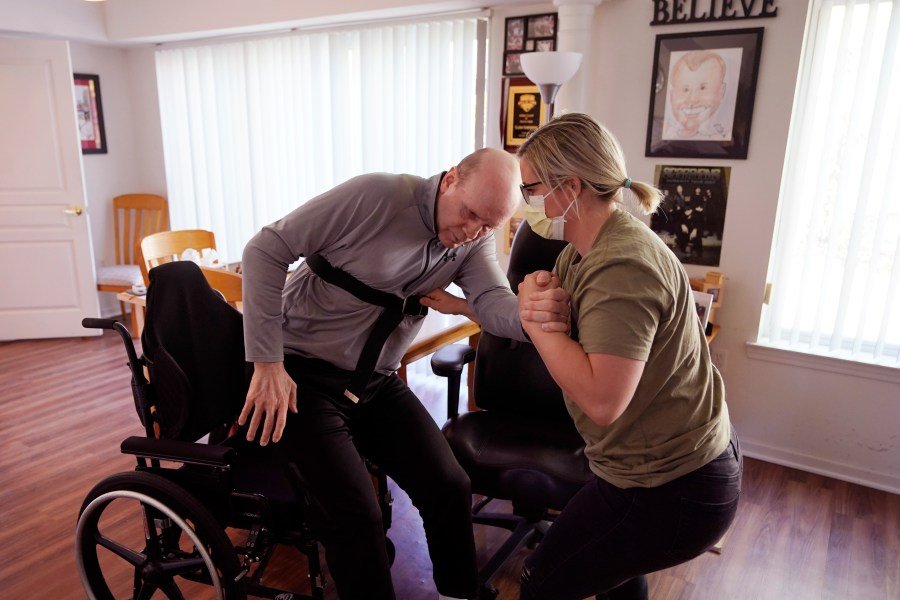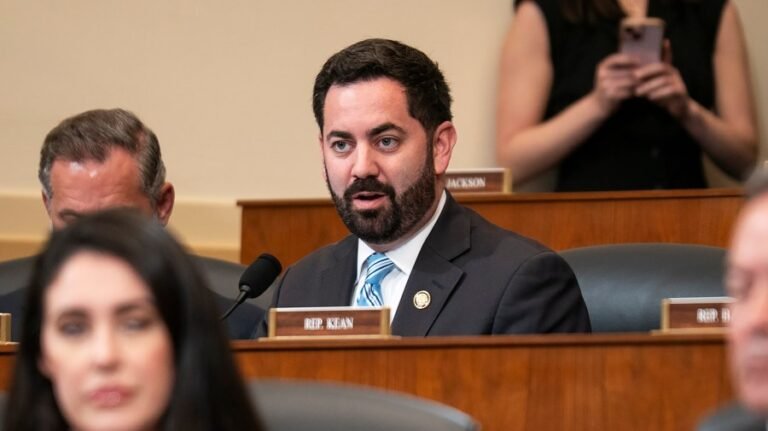
“I’m ready for my breakfast, Michael.”
These are the words I hear each morning when my mother stays with us. I start the day by preparing her oatmeal, buttered toast and exactly half a glass of milk — not three-eighths, not five-eighths, exactly half. Otherwise, I’d hear about it. After I present the tray of food and tune the TV to the Hallmark channel, I head to my desk to begin work, but I’m usually called back within minutes to help again. It’s a rhythm I know well.
Most of the year, my 85-year-old mother lives with my sister in Virginia. She coordinates care, manages appointments and serves nearly every meal. While my wife, daughters and I look forward to visits from my mother, we also know it will always be all-hands-on-deck. The truth is, my mom needs help with carrying out ordinary activities throughout the course of each and every day.
Many families take on these responsibilities themselves because the financial strain of paying a professional caregiver would be too much to bear.
The national median cost for a home health aide now tops $77,000 annually. For homemaker services, historically a more affordable entry point covering tasks like meal preparation and errands, it’s more than $75,000. Even adult day care centers, considered a lower cost option, carry a median annual cost of $26,000.
With the average long-term-care event lasting approximately three years, these aren’t just numbers on a spreadsheet. They affect household budgets, impact retirement savings and make for very hard choices.
With that in mind our company recently brought together providers, policymakers and advocates in Washington, D.C., for a long-term-care symposium focused on what it will take to build a more sustainable, affordable financing system for long-term care. Among the shared points of view that emerged from the discussions was a consensus that the current patchwork of solutions is inadequate and that families are shouldering too large a burden.
That consensus reflects what the data already show: the long-term-care crisis is accelerating.
Each day through 2030, 10,000 baby boomers will turn 65, and about 70 percent of them will need some form of long-term services and supports. But many won’t be in a financial position to sustain the cost. In fact, costs are rising fastest for home care — the very setting in which most would prefer to age. Moreover, two-thirds of home care agencies now charge the same hourly rate for homemaker and home health aide services.
We don’t have time to wait for perfect answers. This is not a distant concern. It’s here now, knocking on the doors of families across the country — often quietly, but usually without relent.
So, what does a solution look like?
We believe the scope of the long-term-care challenge demands that the public and private sectors work in collaboration. An optimal framework would include dedicated government-provided funding for long-term-care services, while also encouraging participation in the market for complementary private-sector solutions. The increased take up of private solutions would shift some of the burden away from Medicaid, the payor of last resort for long-term care.
That’s why we support bipartisan efforts like the WISH Act, which proposes a federal backstop for catastrophic long-term-care costs. At the state level, Washington has taken an alternative approach with its WA Cares program, which provides a foundational layer of support that defrays the cost when care is needed. These efforts point to a more viable path forward that also includes a role for private long-term-care insurance.
To be sure, solving the financing issue is fundamental to addressing the long-term-care crisis in our country. However, a comprehensive solution will also include clearer paths to quality care, better tools for planning, and support for caregivers commensurate with the dignity and respect their profession deserves.
We are helping millions of families navigate the aging journey and paying out over $30 billion in claims. We will continue to do our part, and we are ready and willing to work with others to create a sustainable long-term-care system in America.
Michael W. Shepherd is senior vice president, government relations at Genworth Financial, Inc.






